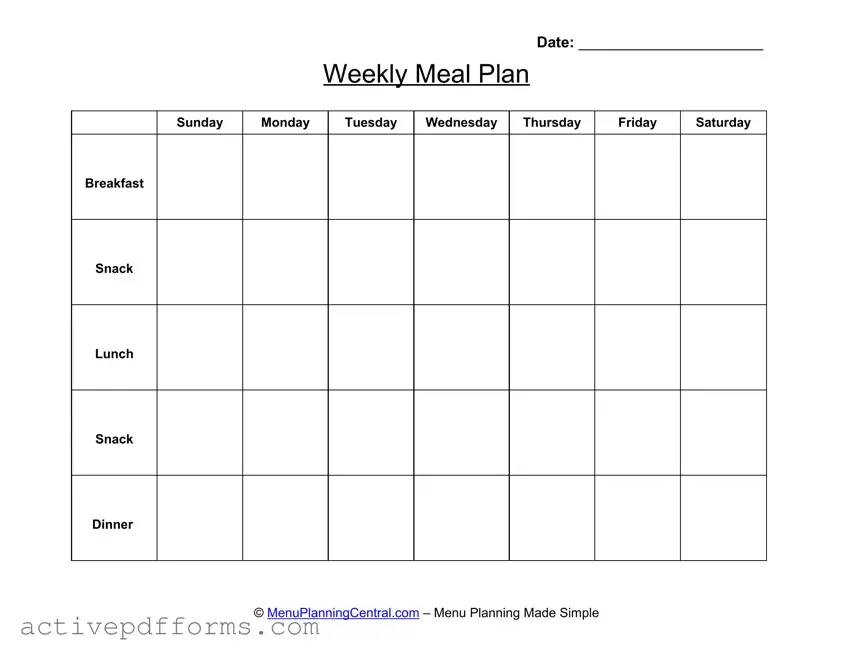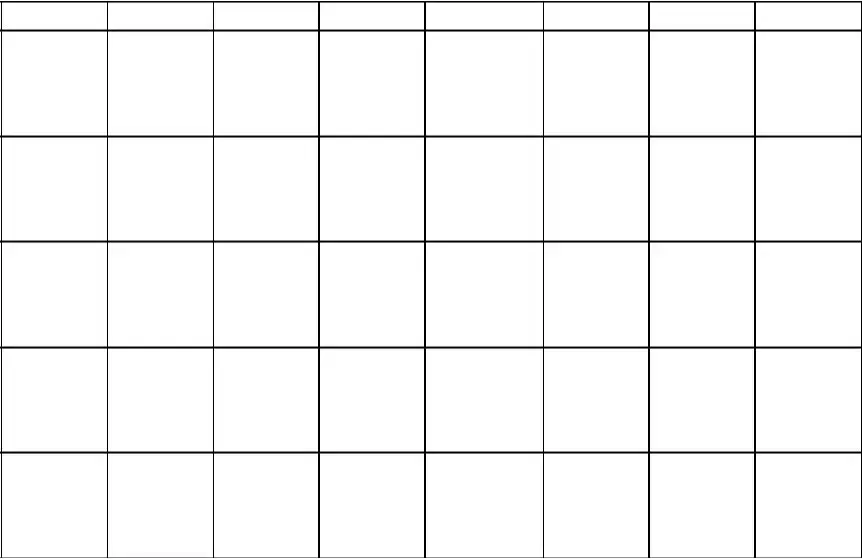In the hustle of daily life, the task of meal planning can often become overwhelming, yet it holds the key to a structured and efficient household. Recognizing the need for simplicity in this essential activity, the Menu Planner form emerges as a practical tool designed to keep weekly meal planning organized and straightforward. This form neatly lays out the days of the week, from Sunday to Saturday, allocating spaces for each meal of the day—breakfast, lunch, and dinner—alongside slots for snacks in between. By providing a clear template for users to fill in their meal choices for each day, the form turns the daunting task of meal planning into a manageable and even enjoyable activity. It encourages foresight in grocery shopping, helps in maintaining a balanced diet throughout the week, and can significantly alleviate the stress of last-minute meal decisions, making Menu Planning Made Simple not just a tagline, but a reality for its users.

